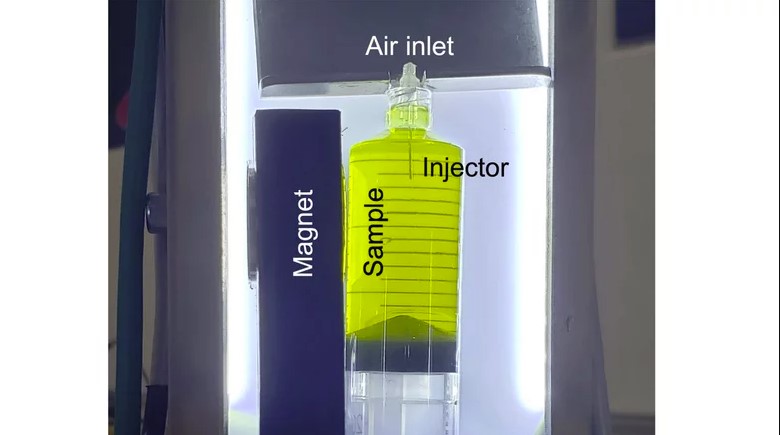Magnets could provide a solution to the oxygen problem on long space journeys

Using magnets to create oxygen in microgravity has been proved by a team of researchers at the University of Warwick. Instead of using bulky equipment that isn't ideal for long trips, the bubbles are attracted with magnets to form one location where they may be gathered in low-gravity instead. The key issue addressed by the studies is buoyancy. To put it more precisely, the lack of natural buoyancy in space.
The effect of gravity on bubbles in liquids differs from that on Earth, where gas bubbles in a liquid rise to the top owing to the influence of gravity. Bubbles remain suspended in the liquid medium in microgravity, unlike on Earth, where they would float to the top due to gravitational forces. To get around this problem, space station equipment employs centrifuges to drive gases out. These machines are hefty, consume a lot of electricity, and require a lot of maintenance.
The current technologies, such as those currently used for the Oxygen Generation Assembly on the space station, were determined to be unsuitable for long-term missions like a trip to Mars and beyond by a NASA study. This is where recent studies come into play by using magnetism to eliminate the need for centrifuges in oxygen production. Scientists experimented with magnetic separation techniques in space during the first mission of India's Space Capsule. They looked at how magnets can be used to phase separate gas from liquid under microgravity conditions in Germany using the unique drop tower facility at Center for Applied Space Technology and Microgravity.

In a new study, researchers experimented with a variety of liquids to determine if an artificial magnet might be utilized to draw bubbles on the electrode's surface for easier extraction. The most common approach to generate oxygen in space is electrolysis, which entails passing electricity through water to separate the hydrogen and oxygen atoms. However, withdrawing the oxygen from an electrolytic cell necessitates the use of an artificial centrifugal chamber that spins and forces gas out. A simple neodymium magnet could be used in microgravity to extract the gas according to the research.
Dr. Katharina Brinkert, a member of the study team from the University of Warwick, added that "these influences have far-reaching implications for the advancement of phase separation technologies, such as long-term space travel." Lead author Alvaro Romero-Calvo from the University of Colorado Boulder said magnets may be utilized to create entirely passive systems for extracting oxygen in space without requiring additional power or bulky machinery.
The findings of this study have been released in NPJ Microgravity, a Nature-affiliated journal. The toaster-sized MOXIE (Mars Oxygen In-Situ Resource Utilization Experiment) instrument aboard the Perseverance converted carbon dioxide into oxygen on Mars' surface in April 2021, according to previous research. While the machine's primary goal is to make only 10 grams of oxygen each hour, it serves as a critical step forward for future missions.
Source: www.slashgear.com